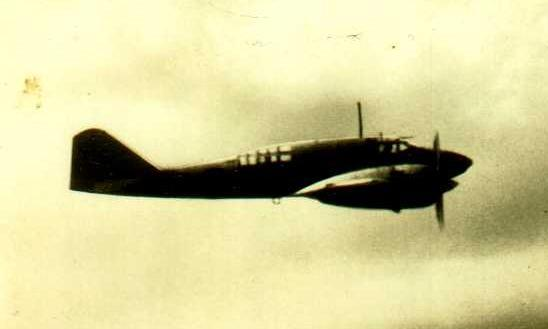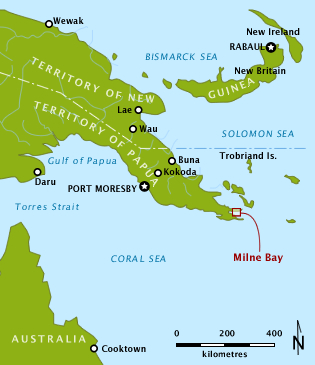
This thread is the next tranche, the 4th, of excerpts and evaluations from FEAF's ATIG No. 153 Japanese Radar Countermeasures, "Actual Operational Use of RCM Equipment By The Japanese Army & Navy - Part B"
page 2
1/
page 2
1/

I'm going to put the links to the three previous threads at the end, as opposed to the beginning, of this thread as Twitter is only letting me get to 24 tweets before forcing me to post.
Cursed Admins!
2/
Cursed Admins!
2/
Starting at page 2 of "Actual Operational Use of RCM Equipment By The Japanese Army & Navy - Part B"
8. US investigators said the March 1945 Betty 22-Okha attack group trying to sink USS Franklin was the only
airborne combat use of the FT-B radar intercept receivers.
3/
8. US investigators said the March 1945 Betty 22-Okha attack group trying to sink USS Franklin was the only
airborne combat use of the FT-B radar intercept receivers.
3/

That 8th statement in this section is not supported by either the FT-B production rate nor Betty 22-Okha targeting of picket ships during the Okinawa campaign.
4/
4/
9. In the summer of 1945 some FT-B were installed at Yokasuka air base as a ground based voice intercept receiver of P-51 air raids from Iwo Jima. It worked in this role providing 5-10 minutes early warning.
Note: I bet the amount of warning time depended...
5/
Note: I bet the amount of warning time depended...
5/
...on how "chatty" P-51 pilots were.
10. The two FT-C radar intercept receiver prototypes were tested May-July 1945. The FT-C was easily operated by aircrew . Frequencies were read directly rather than by harmonics and it had a plus or minus 5 degree directional accuracy...
6/
10. The two FT-C radar intercept receiver prototypes were tested May-July 1945. The FT-C was easily operated by aircrew . Frequencies were read directly rather than by harmonics and it had a plus or minus 5 degree directional accuracy...
6/
It used a modified altimeter that allowed acquired signals to be determined with a plus or minus 3% in range via changing altitude to determine minimum indicated signal. The IJN was enthusiastic over the design but US Investigators said...
7/
7/
...it was too late for the war an the two prototypes were the only ones built.
Note -- The post-WW2 Japanese resource "Japan Radio History Volume 10" --『日本無線史第10巻』 -- says 300 FT-B and 100 FT-C being produced.
A GHQ SWPA Section 22 wartime special report...
8/
Note -- The post-WW2 Japanese resource "Japan Radio History Volume 10" --『日本無線史第10巻』 -- says 300 FT-B and 100 FT-C being produced.
A GHQ SWPA Section 22 wartime special report...
8/
...titled 22/PR0038 Japanese Search Receivers (10 Mar 45) agreed (exactly!) with "Japan Radio History Volume 10" production numbers.
9/
9/
11. The Japanese Air Mark VI radar was modified to add a tail mounted 80cm antenna dipole as a rear attack warning radar. It was activated via manual switching of signal/power from other antenna. It worked, but US investigators claim it was not used operationally.
10/
10/

Note: I have not found any photographic evidence of this.
It is, however, spot-on in the Japanese National Technological style.
11/
It is, however, spot-on in the Japanese National Technological style.
11/
12. In June 1945 the IJN built a radar jammer with 30 Kw power, 20 Mhz wide continuous wave signal at 150 Mhz. The IJN never named it -- US Investigators referred to it as the "FD-7" -- and when tested it jammed a 150Mhz Type 13 radar at 50 miles. The IJN high command...
12/
12/
...loved it and planned to start production of it but the war ended first.
Note: This kit would have been very bad news for the USN picket DD's in Operation Olympic, whose operators had not faced any jamming to that point in WW2.
12/
Note: This kit would have been very bad news for the USN picket DD's in Operation Olympic, whose operators had not faced any jamming to that point in WW2.
12/

13. The IJAAF developed a 3cm radar intercept receiver called the Tachi-30 in Dec 1944. It was ground based at Jukkokutoge in the Hakone Mountains 50 miles from Tokyo. It intercepted one B-29 radar signal & didn't D/F it because of its shortness. No further signals were...
13/
13/
...intercepted there despite more raids. It was moved within 15 miles of Tokyo at Tachikawa in Jan 1945. A Taki-14 airborne 28cm radar was brought in as a target to train the Tachi-30 operators. The IJAAF stated no further 3 cm signals were detected with the...
14/
14/
... Tachi-30 at Tachikawa between Jan & Aug 1945.
Note: If the receiver is designed to cover 3 cm, heard 3 cm once, and it hears 28 cm inside it's listening design range. Somebody is misrepresenting something. Who, for what reasons and why isn't knowable at this date.
15/
Note: If the receiver is designed to cover 3 cm, heard 3 cm once, and it hears 28 cm inside it's listening design range. Somebody is misrepresenting something. Who, for what reasons and why isn't knowable at this date.
15/
Now...thread administrivia!
This was the 1st thread in the series.
16/
This was the 1st thread in the series.
16/
https://twitter.com/TrentTelenko/status/1369805884994428930
This was the 2nd thread ATIG No. 153 Japanese Radar Countermeasures thread.
17/
17/
https://twitter.com/TrentTelenko/status/1370485646515707912
This was the 3rd tweet thread in the Air Technical Intelligence Group Report No. 153 series.
18/
18/
https://twitter.com/TrentTelenko/status/1372618125674479617
This tweet ends the 4th tweet thread that has reviewed & evaluated page 2 of the "Actual Operational Use of RCM Equipment By The Japanese Army & Navy - Part B" section in FEAF's Air Technical Intelligence Group (ATIG) Report No. 153 Japanese Radar Countermeasures.
19/
19/
This is the document page that was excerpted and summarized from for the above thread.
I thought I had attached it last night...and didn't.
Opps.
I thought I had attached it last night...and didn't.
Opps.

@threadreaderapp unroll
• • •
Missing some Tweet in this thread? You can try to
force a refresh








